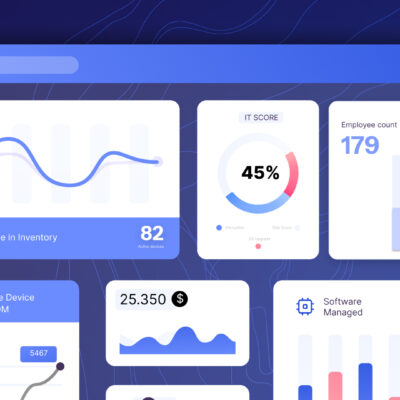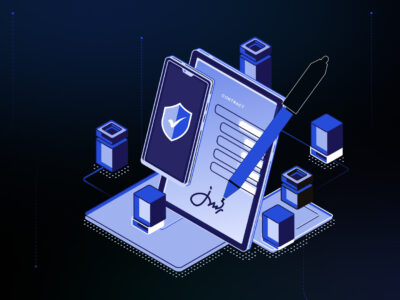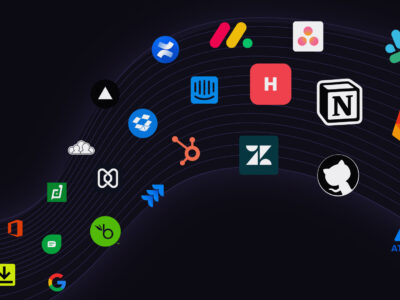Strategies to Ensure a Secure Offboarding Process
According to a 2023 report by Torii, 76% of IT leaders say offboarding is a significant security threat. Offboarding is a critical aspect of the employee lifecycle that often receives less attention than onboarding. However, neglecting the security aspects of offboarding can lead to significant risks for organizations. This blog will discuss the steps to mitigate security risks during employee offboarding.
When an employee departs voluntarily or involuntarily, several security risks emerge that organizations must address to safeguard their sensitive information and assets. Some common risks include:
- Data Breaches: Departing employees may retain access to sensitive company data, increasing the risk of unauthorized data breaches or leaks.
- Unauthorized Access: Failure to revoke access credentials promptly may result in ex-employees having unauthorized access to company systems and information.
- Intellectual Property Threats: Departing employees may pose a risk of taking valuable intellectual property or confidential information with them, either intentionally or unintentionally.
- Reputation Damage: If an employee departs on negative terms, there is a risk of them engaging in malicious activities that could harm the company’s reputation.
Steps to ensure a secure offboarding process and minimize potential security risks
To mitigate security risks during employee offboarding, make sure you follow the below steps:
- A Comprehensive Offboarding Policy: Establishing a well-defined offboarding policy is the first step in securing the offboarding process. This policy should outline the steps and procedures needed when employees leave the organization. For instance, an effective onboarding policy must cover the following aspects:
Notification: Clearly define how and when the departure should be communicated to relevant departments.
Asset Return: Specify the return of company-owned devices, access cards, and other company property.
Access Revocation: Detail the process for revoking access to company systems, networks, and data.
Exit Interviews: Conduct exit interviews to gather feedback and ensure that departing employees understand their responsibilities. - Timely Communication & Planning: Prompt communication is essential during the offboarding process. The HR department, IT, and relevant stakeholders should be informed of an employee’s departure immediately. This process ensures that necessary measures can be taken swiftly to revoke access and secure sensitive information.
- Access Revocation: One of the critical aspects of offboarding is revoking access to company systems and data, including deactivating login credentials, email accounts, and any other access points the employee may have had to prevent unauthorized entry.
- Data Backups and Transfers: Before an employee departs, it’s crucial to back up and transfer any critical data they were working on. This step prevents data loss and ensures that the organization retains important information. Passwords and encryption keys should be changed in order to prevent former employees from accessing sensitive data.
- Secure Device Management: Retrieve all company-owned devices, such as laptops, smartphones, and access cards. If the departing employee was using company-owned devices, ensure that these devices are thoroughly checked for company data and then wiped or securely transferred to another employee. Implementing Mobile Device Management (MDM) solutions can help remotely manage and wipe devices.
- Exit Interviews: Conduct exit interviews to understand the reason for departure and address any concerns. Use this opportunity to remind departing employees of their confidentiality obligations. Educate departing employees about their responsibility to safeguard company information even after leaving. Reinforce the importance of returning company property, not retaining confidential information, and adhering to the organization’s data protection policies.
- Documentation and Policy Review: Update documentation to reflect the employee’s departure, including access revocation and device retrieval. Ensure that offboarding policies are reviewed regularly and aligned with best practices.
- Confidential Information Handling: Clearly define the procedures for handling confidential information during offboarding. Employees should be reminded of their contractual obligations regarding the protection of sensitive information even after leaving the organization.
- Collaboration Across Departments: Offboarding is a collaborative effort that involves HR, IT, security, and other relevant departments. Establish clear communication channels and protocols to ensure a seamless flow of information and action during the offboarding process.
How an Automated Offboarding Process Can Minimize Security Risks
Automating the offboarding process ensures efficiency and reduces the likelihood of human error. Automated offboarding systems can:
- Ensure Consistency: Automation ensures that offboarding processes are consistently followed for every departing employee, reducing the risk of oversight.
- Immediate Access Revocation: Automated systems can instantly revoke access to all systems and platforms, minimizing the window of vulnerability.
- Audit Trails: Automation provides detailed audit trails, enabling organizations to track and monitor the offboarding process for compliance and security purposes.
- Notification Systems: Automated systems can trigger notifications to relevant departments, ensuring that HR, IT, and other stakeholders are promptly informed of the departure.
How ZenAdmin helps with a secure employee offboarding
ZenAdmin is a comprehensive IT Management Solution that goes beyond traditional offboarding systems by offering. With ZenAdmin, you can trigger a surge of HR and IT actions, automating your entire offboarding process.
- Integration Capabilities: ZenAdmin seamlessly integrates with existing HR and IT systems like BambooHR, Humaans, Hibob, Personio, Freshservice, and Hexnode, ensuring a synchronized and efficient offboarding process.
- Efficient Notification System: Using our workflow recipes, you can send notifications via Slack or Teams to all the stakeholders across various departments at different stages of the offboarding process.
- Workflow Automation: With ZenAdmin, you can trigger a surge of HR and IT actions, automating your offboarding process. Our workflow automation templates can be used to assign tasks, send checklists, notify, and set up meetings with the leavers and other stakeholders.
- Access Management: You can revoke access and delete the leavers’ user profiles via ZenAdmin without hassle. You can even lock the device to block unauthorized access during or after offboarding.
- Data Encryption and Wiping: ZenAdmin provides advanced data encryption and wiping capabilities to secure company data on departing employees’ devices.
- Compliance Monitoring: ZenAdmin includes robust compliance monitoring features, helping organizations adhere to industry regulations and internal policies during employee offboarding.
Get a quick demo here to learn more about ZenAdmin and how we can help you streamline your offboarding process and save hours.
In conclusion, a secure offboarding process is essential to mitigate potential security risks associated with employee departures. By implementing best practices and leveraging advanced solutions like ZenAdmin, organizations can ensure a smooth, secure, and compliant offboarding experience for departing employees and the company.












